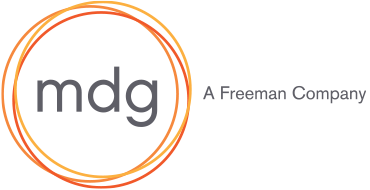
We spend months selling our exhibitor floor to ensure we have the appropriate breadth and depth of industry suppliers represented. We do the same when it comes to our conferences, seeking out top speakers and thought leaders to spark ideas, guide conversations and deliver relevancy to our events. We identify prospects, build a database and create a campaign to reach the audiences that we’ve come to know over the many years of producing events.
What could we possibly be missing? Perhaps the industry we think we know is much larger, more complex and more diverse than what we see onsite. It’s likely that we are overlooking, under-accommodating and generally misunderstanding certain segments of our prospective audience.
Start with content
Let’s begin with a simple scenario. You’re a 28-year-old Hispanic woman. You work in finance for a regional furniture company in Southern Texas. When creating your annual budget, you’re deciding between two industry conferences. Both events are well-attended and feature timely information and networking opportunities. But, as you review their websites, one has female keynotes, networking opportunities with mentor-mentee matchmaking and sessions that include financing in underserved areas. You are immediately drawn to this conference since it is touching on your needs beyond those of the average finance manager. The conference is looking to inspire you with representation of accomplished women as keynotes. As a young professional you’ve been seeking professional guidance, so the mentor matchmaking intrigues you. The daily challenges you face with the community you serve leaves you searching for answers, and there are sessions developed essentially just for you. Although the other conference is highly regarded in the industry, it’s clear which event resonates with you.
The point is, your event’s content matters. To attract a diverse audience, you first have to analyze what you’re offering. Creating conference programs that are inclusive of all segments of your audience and delivering an array of opportunities to meet their needs is a must. By introducing unique networking sessions and speakers that reflect multiple viewpoints you create an environment that fosters diversity where everyone can benefit from shared ideas and new perspectives.
It goes beyond checking a box
So how do we define diversity? It involves the portrayal of different types of people. We can begin with basic demographics: African-American, White, Hispanic, male and female, age, etc. But other dimensions, including socioeconomic and cultural backgrounds, can also be considered. Inclusion, on the other hand, is deriving the uniqueness of a diverse group for the benefit of learning from one another.
Developing a true understanding of an audience and its many micro-segments and cultural nuances takes time and market research. Learning what makes your audience tick by developing personas—detailed representations of the different segments of your target audience—can lay out some of the fundamental motivations and concerns of potential segments. When conducting research, be mindful of incorporating respondents from a wide range of backgrounds; take the time to speak to attendees who are underrepresented during events; and facilitate focus groups with non-attendees. We can even take our research a step further to shape and refine strategies by considering environmental, economic and social factors. This can help define segments within industries where the overwhelming majority are tied together by a single demographic element like race or gender, making diversity a bit harder to uncover.
The power of affinity
We are more likely to identify with someone who looks like us. Who sounds like us. Who understand us. Your attendees are no different. People gravitate to familiarity. Connecting with your audience and creating campaigns that are authentic while communicating benefits can be challenging. Using inclusive images in marketing collateral is an obvious way to demonstrate diversity, but subtle clues in attitudes, values and culture factor substantially into the equation. Incorporating a variety of human elements into marketing communication not only showcases a segment’s individuality, but also its resilience and character. By highlighting these values and ideals, potential attendees will see themselves reflected in your marketing and ultimately at your event.
Incorporating diversity can be challenging. There is no quick fix or single solution. It starts with a looking around the table and welcoming enlightening internal conversations about age, race, religion, culture and everything in-between. It also means increased representation of the audience you’re trying to reach on executive boards, speaker slates and in the planning process. It’s almost impossible to create authentic content that appeals to an audience without a voice from said audience. Taking the initiative to seek diversity in the people you employ and the agencies you hire will put you on the right track to widen your perspective and help paint a clear picture of what your potential attendees need.
A version of this content originally appeared in PCMA Convene


